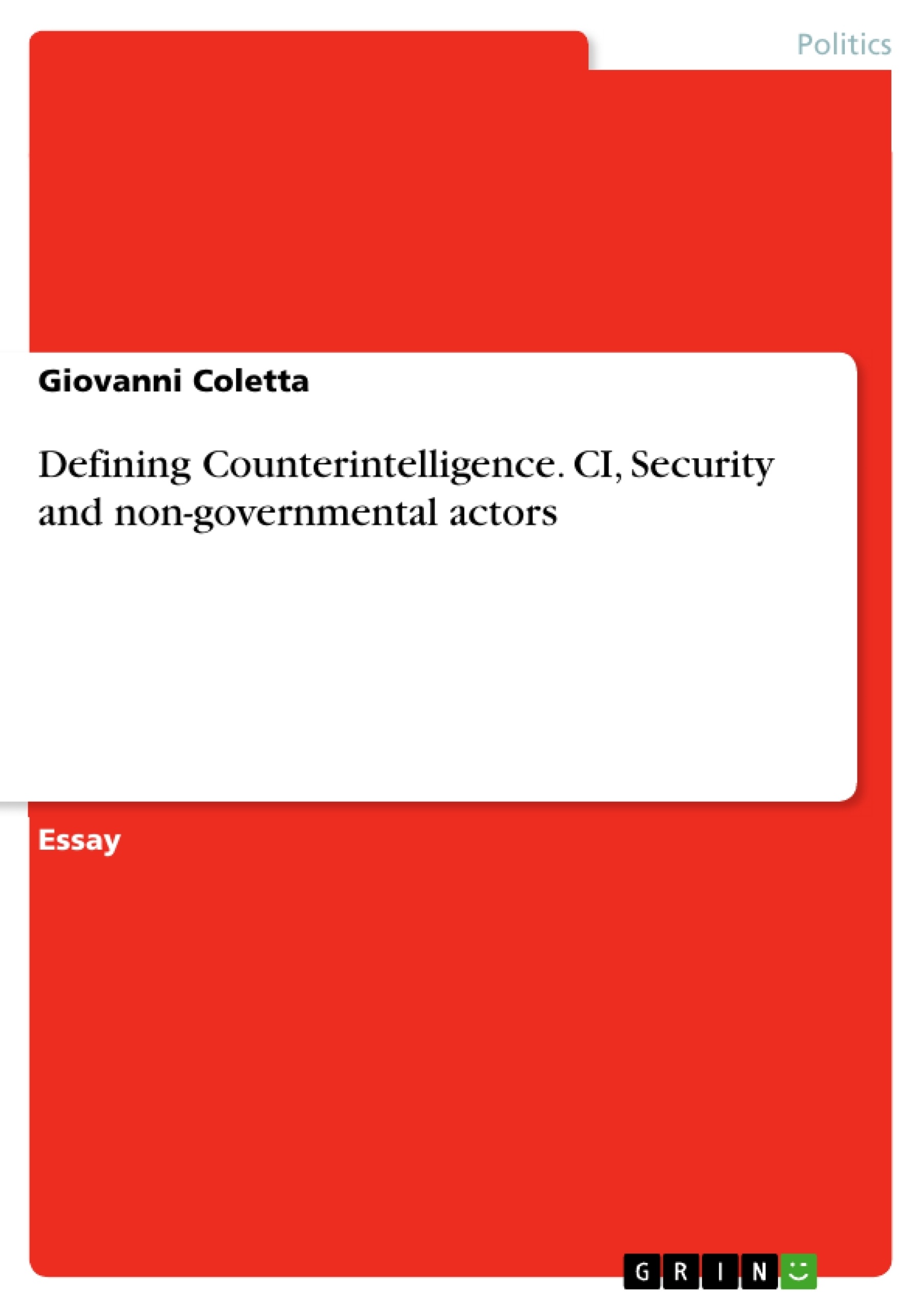The issue of the mutual boundaries between Counterintelligence (CI) and Security (Sy) activities and responsibilities has been largely engaged on a theoretical level over the last few decades. However, the lack of an accurate and widely agreed distinction has generated a certain confusion about what the actual distribution of the responsibilities of each activity is in daily practice. As a preliminary discussion, this essay will analyse the responsibilities of both CI agents and Sy officers in order to clarify similarities and differences, arguing that the practice of counterintelligence is not simply an extension of the Sy officer’s one, although there are some common duties. Secondly, it will illustrate how these differences apply to different organizations by presenting examples of state (CIA) and non-state (IRA) actors. Finally, it will be argued that the division of responsibilities between CI practitioners and Sy officers lies with the nature of the organization considered, as it appears clearly defined in the state actors, whereas it assumes different forms in the non-state actors.
Table of Contents
- The problem of definition
- Counterintelligence or Security?
- Counterintelligence for non-governmental actors
Objectives and Key Themes
This essay explores the challenging concept of counterintelligence (CI) by examining different approaches to defining it, focusing on organizational, operational, and epistemological aspects. It analyzes the limitations of existing definitions and argues for a more comprehensive understanding that considers the interconnectedness of these factors.
- The complexities of defining counterintelligence
- The relationship between counterintelligence and security
- The importance of considering organizational behavior and structure
- The role of data collection and analysis in counterintelligence operations
- The evolving nature of counterintelligence in the digital age
Chapter Summaries
- The problem of definition: This chapter explores the lack of a unified definition of counterintelligence and examines three major categories of definitions: organizational, operational, and epistemological. It highlights the benefits and limitations of each category, arguing that they fail to consider the interconnectedness of different factors.
- Counterintelligence or Security?: This chapter delves into the relationship between counterintelligence and security, recognizing the difficulties in clearly delineating their boundaries. It discusses various perspectives on the differences and similarities between these concepts, ultimately emphasizing the need for a nuanced understanding of their interplay.
Keywords
Counterintelligence, security, organizational behavior, operational methods, data analysis, epistemology, cyber threats, information security, intelligence services, national security.
- Quote paper
- Dr Giovanni Coletta (Author), 2017, Defining Counterintelligence. CI, Security and non-governmental actors, Munich, GRIN Verlag, https://www.grin.com/document/369010



